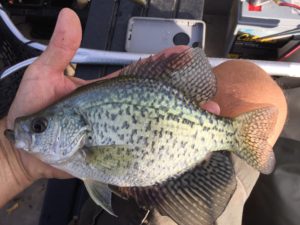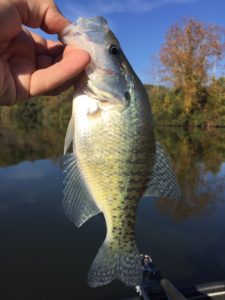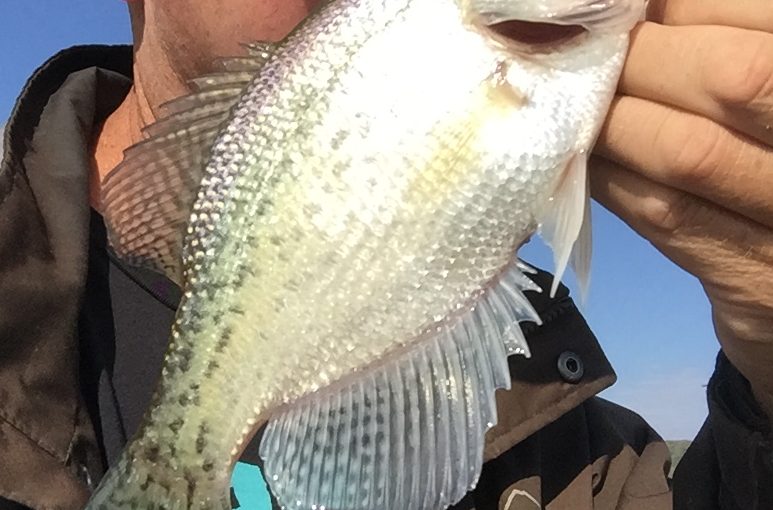Crappies come in two varieties – black and white. You would think with descriptive names like that, telling the two species apart would be as easy as, well, black and white. For a crappie beginner, the differences may not be that obvious. For example; the very light colored fish at the top is not a white crappie. It is a black crappie.


The most conspicuous difference is the patteren on the sides of the fish. The white crappie has dark blotches arranged in bars. The black crappie wears his blotches in an evenly distributed pattern.
Body shape is another ID cue. Black crappies have a more round silhouette. White crappies are more “stretched out”, and have a little more of a snout.


The most analytical identification characteristic is a count of the rigid spines of the dorsal fin, A white crappie will have 5 to 6 spines. A black crappie will have 7 to 8 spines. When in doubt, a quick count of the spines will provide a near certain identification.
The range and preferred habitats of the two species overlap quite a bit. In my area, the black crappie is the dominant species. In other areas, the white is the dominant crappie. In either instance, it is still quite common to run into both species during the course of a season, or even in a single day. With these three methods to differentiate the two species, you will always be sure of a proper ID.


